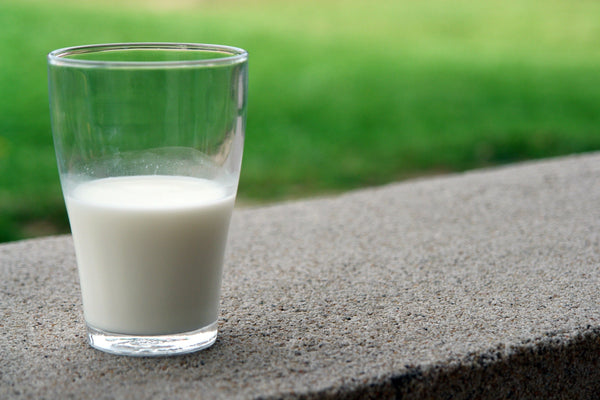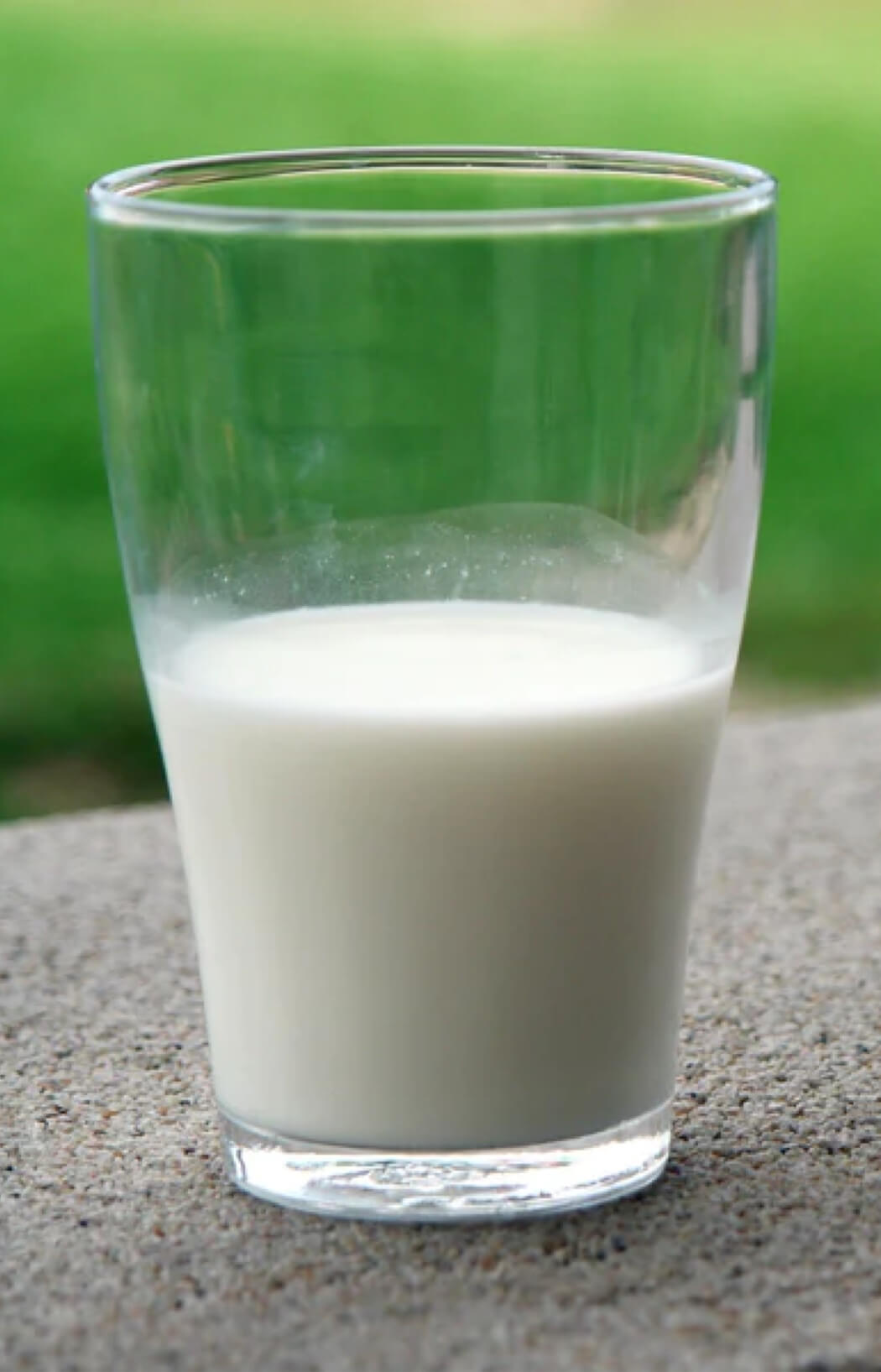Introduction
The dairy aisle has seen a transition in recent years with 1 in 3 Americans consuming plant-based milk weekly. Plant-based milk isn’t a new concept; it has existed for some time. However, today, with increased health consciousness, plant-based milk is finding its way into every home. In fact, over 67% of U.S. adults have already tried non-dairy milk.
Dairy-derived milk continues to dominate the market however the sales of cow's milk alternatives are rising steadily. Why do consumers prefer plant-based milk over traditional cow’s milk and which one is better? Read on and find out! If you're planning the shift to plant-based milk, you may have a few questions. We’ve done our research, so here you have it; everything you need to know for an informed decision on whether you should change to plant-based milk or stick with cow’s milk.
Plant-based milk vs Cow’s milk?
Plant-based milk vs cow milk has been a topic of debate for a long time. What is plant-based milk? Plant-based milk is prepared by grinding a plant source (Bambara groundnut, oat, pea, rice, soy,...) with water, then adding optionally some vegetable oil, flavors, vitamins, and minerals. It is typically lower in saturated fats and calories than cow’s milk and it’s a good option for people who are lactose intolerant and prone to milk allergies.
Cow’s milk and plant-based milk are classified into various types. Here are a few popular forms of each-
Cow’s Milk
Depending on the fat percentage, cow’s milk falls into 6 major types. Here are the types of cow milk with everything you need to know about them.

- Whole Milk- has around 3.2% fat and is the milk most commonly consumed by Americans.
- Reduced Fat Milk- has 2% fat content
- Skim Milk- is fat-free and said to contain water to balance the fat content
- Organic Milk- is obtained from organically reared cows. Good animal care leads to high-quality, wholesome milk
- Lactose-free Milk- requires a breakdown of natural sugar in the milk, making it suitable for the lactose-intolerant
- Raw Milk- is unpasteurized and its distribution is prohibited.
Plant-Based Milk
When it comes to plant-based milk, there is a bigger variety. It not only differs in fat content but also in other nutrients. Additionally, the various plant-based milk differs in taste too. Let’s look at the most popular milk alternatives..
BAMnut Milk
Obtained from Bambara groundnuts and blended with coconut oil and shea butter; bamnut milk is versatile and creamy, which is why it finds applications in so many foods and drinks. It has the potential to froth and foam-like cow’s milk, making it a popular choice as a substitute in lattes. It is rich in protein and low in fats and additives. It is fortified with vitamins and minerals including calcium, and Vitamins B12 and D2.
BAMnut milk has just set foot in the market and isn’t widely known yet. However, its excellent properties are no secret. If you want to give BAMnut Milk a try; you won’t find a better option than WhatIF foods! The company is creating its own supply chain for Bambara groundnut directly from farming communities in Ghana furnish you with the most delectable milk.
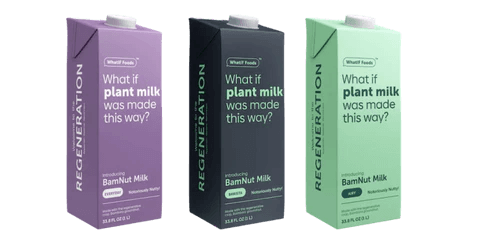
Soy Milk
It is no surprise that soy milk is the most popular plant-based milk since it was the first milk alternative discovered. It has a creamy taste and is the only substitute loaded with the same amount of proteins as cow’s milk.
Almond Milk
Almond milk, the lowest calorie plant milk, is still the most widely used and is often made available at cafes and restaurants due to the high demand, accessibility, and health benefits. It contains protein, fiber, calcium, vitamin E, and healthy monounsaturated fats. It has a slightly nutty flavour and a light sweet taste.
Rice Milk
Some people are allergic to milk, nuts, and soy. Yet, very few are allergic to rice grains. Although it is not as popular as soy or almond milk, rice milk is on the non-dairy radar of many consumers. It has a natural sweetness and watery consistency.
Apart from these, coconut milk, oat milk, pea milk, and hemp milk are just a few alternatives of plant-based milk available today.
Nutritional Comparison of Plant-Based Milk and Cow's Milk
Now that we are acquainted with the various types of plant-based and cow’s milk; let’s delve deeper and understand the nutrition offered by plant-based and cow’s milk.
Plant-based milk vs cow’s milk; which is better when it comes to health?
Each plant milk is different from one another, depending on various parameters: the plant source, the other ingredients added, and how it was processed. But generally speaking, plant milk is definitely lower in saturated fats and calories and renders you add the nutritional benefits of the plant they are extracted from.
As an example, BAMnut Milk contains 5g of fibers per serving (19% DV) which is essential to gut health. In comparison, cow’s milk doesn’t contain any fiber.
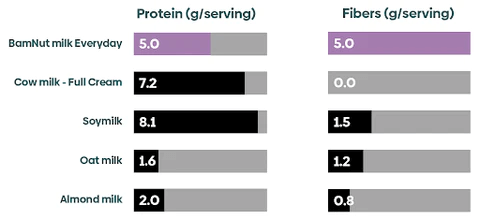
Plant-based milk vs cow’s milk; which is better when it comes to the planet?
In recent years; it has been noticed how cow milk emits tremendous amounts of methane in addition to greenhouse gases. It also utilizes vast areas of land and more water than plant-based milk; which is why people are turning to plant-based milk.
Differences exist even when it comes to the various alternatives to plant-based milk. For instance, almond milk needs excessive water. Furthermore, each plant source also impacts soil health and farming communities differently.
Today, the majority of crops are cultivated in a way that causes degradation of soil and impacts soil biodiversity, and the water cycles negatively. Practices like crop monoculture, intensive agriculture, tilling, and usage of synthetic fertilizers, herbicides, and insecticides are collectively responsible for environmental damage.
To tackle all these issues, we can adopt an environment-friendly tactic and instead choose a product that is created by people who put effort into restoring soil health; the basis of our entire food chain. WhatIF Foods; for example, incorporates the regenerative crop Bambara groundnut; a forgotten but climate-resilient legume into all its products, which naturally restores soil health and returns a balance to the ecosystem.
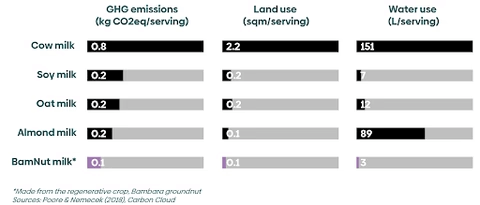
Conclusion
Plant-based milk vs cows’ milk; which one is better and which one should you go for? This boils down to your taste preferences, dietary needs, restrictions, environmental concerns, budget, and application. One thing we can assure you is that at WhatIF Foods, we made BAMnut Milk thinking about how to replenish you, how to restore soil health, and how to reconnect with farming communities. With the Bambara groundnut, we strive to bring biodiversity back into the soil and in your plate/glasses - and it tastes damn good! (at least that’s what people say!)
What's next?
Read all about the mighty BAMnut and its journey to your kitchen here.
Learn more about the show-stopping nutritional profile of BAMnut here.
Discover how biochar plays an important role in reducing our carbon footprint here.
Find out how we create a Better Better with our partner farming communities here.
